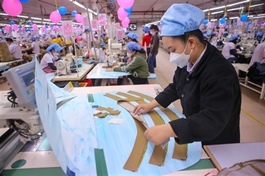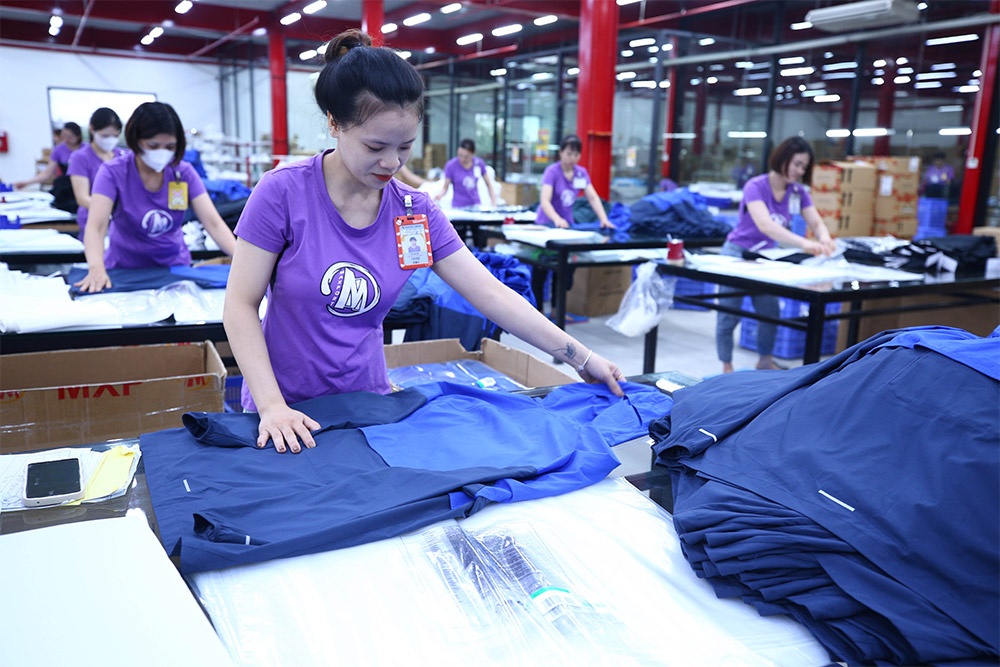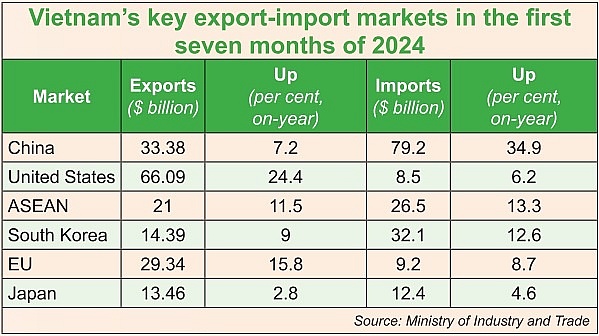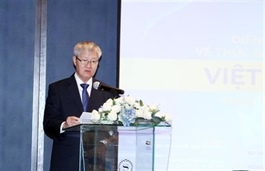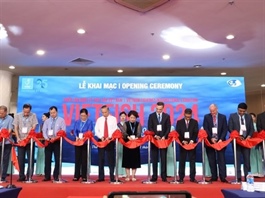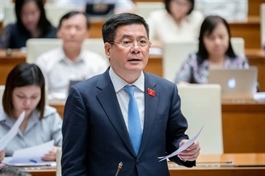Wide-ranging partnerships pick up semiconductor pace
Wide-ranging partnerships pick up semiconductor pace
The collaboration between the state, enterprises, and universities is proving effective in developing human resources for the semiconductor industry and achieving the goals set for 2030.
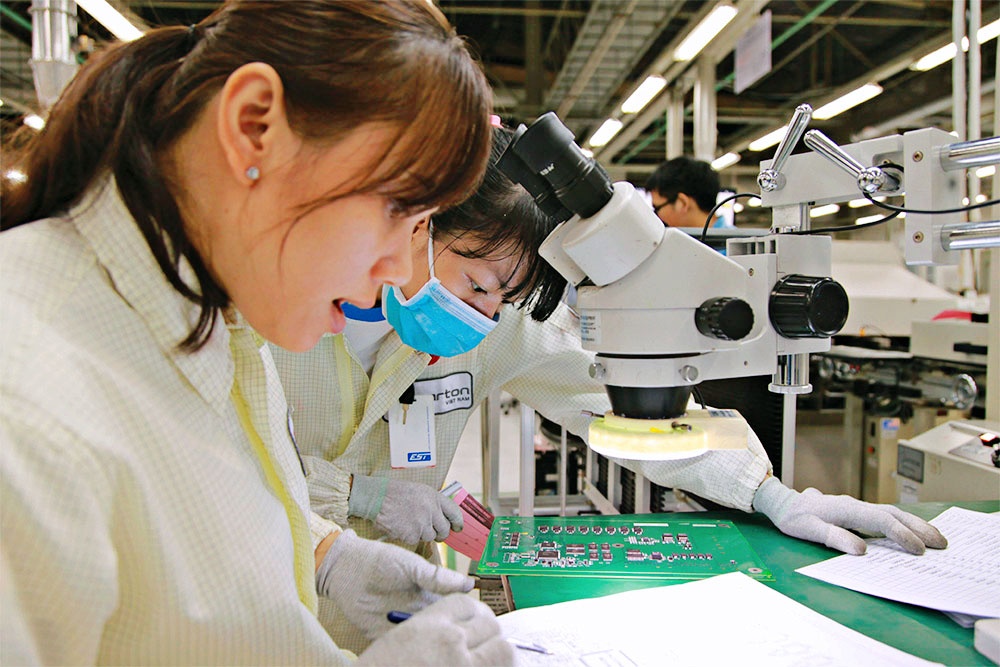
At a seminar on promoting the role of Vietnamese enterprises in developing a workforce for the semiconductor industry, held at the Ministry of Planning and Investment (MPI) headquarters over a week ago, Truong Gia Binh, chairman of FPT Corporation, emphasised the unprecedented level of involvement from these three stakeholders in training personnel for the semiconductor sector.
“The collective effort from the state, enterprises, and universities to train high-quality professionals for this critical technology sector is stronger than ever,” Binh said. “At times, state agencies have been even more proactive in supporting the semiconductor industry than the businesses themselves.”
By 2030, FPT aims to train 50,000 semiconductor engineers, with a target of 10,000 in 2025. The company is currently implementing robust training programmes at various levels, from short courses to university degrees, in collaboration with partners from the US, Japan, and Taiwan.
“Students trained in this globally sought-after field will have numerous job opportunities,” Binh added. “When I met with Japanese companies, they expressed interest in providing us with many job opportunities if we have the necessary human resources. Therefore, our employees must continuously upgrade their skills.”
Similarly, Viettel, a local player in chip design, has made significant strides. Nguyen Trung Kien, deputy head of the group’s Semiconductor Technology Department, noted that Viettel began researching and designing chips in 2019, and has since developed digital front-end chips for 5G base stations and high-frequency transceiver chips for 5G and other communication systems.
“This lays the foundation for Viettel to manufacture chips for various applications in the future,” Kien said. “To master the most complex chip lines within the 5G ecosystem, Viettel has collaborated with both domestic and international enterprises, as well as Ho Chi Minh City University of Technology. Our success relies on these collaborations and leveraging the resources of all involved parties. We will continue to expand these partnerships to advance chip production.”
In the central city of Danang, efforts are underway to create a supportive environment for enterprises involved in semiconductor human resource development. “This is not just a trend but a long-standing commitment. We view the high-tech sector as a key driver for the city’s development,” said Nguyen Van Quang, Secretary of Danang Party Committee.
In January, the Centre for Research and Training on Microchip Design and AI officially began operations in the central city. It is the first unit in the country dedicated to investment support, research, training, and international cooperation in microchips and AI.
“Immediately after its establishment, the centre signed two strategic cooperation agreements with Synopsys and Intel to advance training and human resource development in microchips, semiconductors, and AI,” Quang noted.
Danang is focusing on also developing attractive policies to draw strategic investors, including tax incentives and infrastructure leasing without auction.
“The city is exploring cooperation with Viettel, Synopsys, Intel, and Sovico to entice businesses to invest in, operate, and utilise major infrastructures. This will lay the groundwork for training and practical simulations with modern equipment,” Quang said.
As investment in electronics, chips, and semiconductors grows in Vietnam, experts view Hoa Lac High-Tech Park in the north as an ideal location for investors due to its ecosystem of universities, research institutes, and large technology enterprises, along with preferential investment mechanisms and streamlined administrative procedures.
Tran Dac Trung, deputy head of the Hoa Lac High-Tech Park Management Board, stated, “One of the park’s successes is the connection between universities, research institutes, and enterprises. The park is working with various stakeholders to prepare a skilled workforce for research purposes and meeting the needs of large businesses.”
Trung added that they are creating a strong network through careful preparation and attractive incentive policies. “We believe the park will become a prime destination for technology leaders to establish their presence,” he said.
To support and enhance training courses, technology transfer, and the updating of tools and techniques in universities and colleges, the National Innovation Centre (NIC) is collaborating with domestic and international enterprises. This includes granting training scholarships, providing free software licences for integrated circuit and semiconductor design, and signing cooperation agreements with international universities.
Vo Xuan Hoai, deputy director of the NIC under the MPI, highlighted that the draft scheme on human resources development for the semiconductor industry by 2030, with a vision to 2050, identifies human resources as a key strength for Vietnam.
“The strategic cooperation between the state, universities, and businesses is a focal point of this draft scheme,” Hoai said.
However, some opinions suggest that the scheme should include policies to directly support learners and orient cooperation with foreign partners in the process of training for the semiconductor industry.
On August 5, a national steering committee on semiconductor development was established, with the MPI appointed as the standing agency for the committee. These proactive measures aim to build a robust ecosystem for the semiconductor industry.
A significant milestone is the NIC’s collaboration with domestic and international partners to create training programmes in microchip design. This initiative is crucial for Vietnam’s mastery of semiconductor technology and also aligns with the breakthrough human capital goals outlined in the country’s 2021-2030 socioeconomic development strategy.





